Human-wildlife conflict is a shockingly common problem, often with enormous consequences for both individual animals and entire populations.
When human-wildlife conflict comes to mind, you may immediately think of wildlife crime instead - which isn't wrong, since many regions with wildlife crime problems like poaching are also areas where people may frequently deal with human-wildlife conflict, causing the two issues to go hand-in-hand. But human-wildlife conflict is a much broader issue encompassing many ways that human presence and interference can cause problems for us and animals alike. Human-wildlife conflict includes:
- Elephants trampling a farmer's crops, resulting in retaliation
- New real estate developments infringing on ecosystems where predator species live, leading to predators having less territory and less food, which in turn leads to predators attacking domestic animals and livestock
- Freeways dividing the territory of animals like mountain lions, leading to wildlife venturing into neighborhoods or being killed by cars
- Lead bullets used in hunting causing scavengers like condors to die of lead poisoning
These are just a few examples of how humans can negatively impact wildlife, and it's clear to see how many of these scenarios could escalate. Human-wildlife conflict solutions don't just include ways in which we can prevent these issues (for example, through tracking predators, monitoring populations' territories, or building barriers and wildlife crossings monitored by sensors), but also the ways in which we can help people connect with wildlife and care about learning to live alongside them.
If you're interested in solutions that can prevent human-wildlife conflict, join this group and get to know the people who are working to protect and save species around the world!
Header image: Casey Allen on Unsplash
- @StephODonnell
- | She / Her
WILDLABS & Fauna & Flora
I'm the Community Manager at WILDLABS



- 152 Resources
- 657 Discussions
- 30 Groups
Spanish veterinarian interesting wildlife conservation
- 0 Resources
- 0 Discussions
- 9 Groups
Artificial Intelligence and Environmental Science Researcher
- 0 Resources
- 0 Discussions
- 4 Groups
I am biologist, I have studied wild life and ethnobiology at Amazon and caimans in Brazil
- 0 Resources
- 0 Discussions
- 10 Groups
- @AnnabelL
- | she/her
- 0 Resources
- 0 Discussions
- 10 Groups
- 0 Resources
- 3 Discussions
- 11 Groups
Conservation Writer, Storyteller, & Digital Strategist
- 0 Resources
- 0 Discussions
- 5 Groups
Petnerup
Animal tech startup founder
- 0 Resources
- 2 Discussions
- 9 Groups
- @NinaBaranduin
- | She/ Her
Student in the Artificial Intelligence for Environmental Risk PhD CDT at the University of Cambridge
- 0 Resources
- 0 Discussions
- 1 Groups
Msc student on wildlife management and conservation
- 0 Resources
- 0 Discussions
- 8 Groups
World Wide Fund for Nature/ World Wildlife Fund (WWF)
- 0 Resources
- 7 Discussions
- 9 Groups
- @evan21
- | She/Her
University of St Andrews
Final Year Biology & Geography Undergraduate at the University of St Andrews
- 0 Resources
- 1 Discussions
- 7 Groups
Article
Read in detail about how to use The Inventory, our new living directory of conservation technology tools, organisations, and R&D projects.
1 May 2024
Article
The Inventory is your one-stop shop for conservation technology tools, organisations, and R&D projects. Start contributing to it now!
1 May 2024
Technology to End the Sixth Mass Extinction. Salary: $132 - $160k; Location: Seattle WA; 7+ years of experience in hardware product development and manufacturing; View post for full job description
1 May 2024
Article
What better way to conclude InConversation Season 1: East Africa than by delving into the exciting yet complex world of #tech4wildlife innovation across the region. This episode is going to be double the insight and...
30 April 2024
The primary focus of the research is to explore how red deer movements, space use, habitat selection and foraging behaviour change during the wolf recolonization process.
10 February 2024
Article
An update on @Alasdair and @adanger24's HWC project
11 January 2024
Listen in on our interview with human-predator conflict expert, Gabi Fleury and gain a deeper understanding of the importance of holistic, ethical and community-led approaches to developing tech solutions for...
8 December 2023
TagRanger® is a state-of-the-art wildlife finding, monitoring and tracking solution for research, conservation and environmental professionals. With superior configurability for logging data, reporting location and...
23 November 2023
The illegal wildlife trade varies widely regarding species and geographical variance, necessitating niche and tailored research. Against this background, this study on elephant poaching in Tanzania was conducted at the...
30 October 2023
Careers
The Institute of Zoology (IoZ), the research division of the Zoological Society of London (ZSL), is seeking to fill three new permanent positions by recruiting outstanding early-career researchers as Research Fellows (...
20 October 2023
Listen in on our interview with Mara Elephant Project’s Tracking Manager, Wilson Sairowua, as he explains how MEP is using software, geofencing and drone technologies to resolve human-elephant conflict across Maasai...
20 October 2023
We're delighted to announce that Connected Conservation Foundation and Airbus Foundation have today launched round 2 of the ‘Satellites for Biodiversity Award’.
2 October 2023
October 2024
December 2023
event
14 Products
2 R&D Projects
27 Organisations
Recently updated products
Recently updated R&D Projects
Recently updated organisations
| Description | Activity | Replies | Groups | Updated |
|---|---|---|---|---|
| Thank you Robyn. Sure I will send more information to your email |
|
Citizen Science, Acoustics, Conservation Tech Training and Education, Human-Wildlife Conflict | 1 week ago | |
| SYNTHETIC APERTURE RADAR WILL ALSO DETECT AND LOCATE CHAINSAWS, MOTORBIKES, BICYLCLES, FIREARMS, MACHETES in fact anything metal. I have been concentrating on trying to get... |
+10
|
AI for Conservation, Drones, Emerging Tech, Human-Wildlife Conflict, Wildlife Crime | 1 week ago | |
| Totally agree.Inititally sceptical until I saw Helena and Graeme were involved.MJ |
|
Acoustics, Citizen Science, Community Base, Human-Wildlife Conflict | 1 week 4 days ago | |
| Hi @Henrikcox I hope you are well. I am not sure if you may remember myself and my colleague from CLS. We had a meeting and met in-person at Earthranger last year. ... |
+15
|
Human-Wildlife Conflict, Sensors | 1 month ago | |
| Great to know Lars! Let's stay in touch on this, would love to join the testing out there.Cheers,Henrik |
+68
|
Human-Wildlife Conflict | 1 month ago | |
| This thread is off-topic in this conversation, so happy to continue it in the other one. However, just noting - your system is one example, but not the only one - there are... |
|
Human-Wildlife Conflict, Data management and processing tools | 1 month 1 week ago | |
| Hello community, I wanted to share some exciting updates about my ongoing conservation project for endangered species. I post this here... |
|
Human-Wildlife Conflict, Early Career | 1 month 2 weeks ago | |
| Hi Rokshana,Maybe you can try this product from India called ANIDERS - I think this product would help you a lot. This is their website - |
|
Human-Wildlife Conflict, East Africa Community | 1 month 3 weeks ago | |
| Perfect thanks! I am still a novice using Python but my wife can help me! |
+6
|
AI for Conservation, Camera Traps, Human-Wildlife Conflict | 2 months 1 week ago | |
| @PaulAllin Thanks for your valuable insights. Zenmuse H20N seems to be very powerful and useful in this case. However, I'm looking for a more affordable option for a self-funded... |
+5
|
Drones, Human-Wildlife Conflict | 2 months 2 weeks ago | |
| Hi Amit,The most important thing is that the livestock owners contact you as soon as possible after finding the carcass. We commonly do two things if they contact us on the same... |
|
Camera Traps, AI for Conservation, Conservation Tech Training and Education, Early Career, Human-Wildlife Conflict, Protected Area Management Tools | 2 months 3 weeks ago | |
| Hi Danilo. you seem very passionate about this initiative which is a good start.It is an interesting coincidence that I am starting another project for the coral reefs in the... |
|
Acoustics, AI for Conservation, Biologging, Camera Traps, Citizen Science, Climate Change, Community Base, Connectivity, Drones, Emerging Tech, Human-Wildlife Conflict, Open Source Solutions, Sensors, Software and Mobile Apps, Wildlife Crime | 2 months 4 weeks ago |
pneumatic artificial muscle applications in conservation tech?
5 July 2023 6:59pm
"FISH BANK PROGRAM"(Transforming fishing cat and fish farmer conflict into conservation)
21 June 2023 2:15pm
22 June 2023 4:42pm
Thank you
Automated Elephant-detection system
27 October 2016 10:14pm
12 June 2020 5:53am
Hi,
This is rakesh kalva from India. I have been working on human-elephant conflict in the state of Andhra Pradesh for the past 5 years. This is a cool idea. I have used camera traps to identify movement and individual elephants for demographic data.
Some field based observations of using camera traps for elephants:
1. I usually place the camera traps on forest paths and many of the images we captured wernt of the complete elephant. Its just the legs and trunk. Wont that effect the detection by the software as to wether its an elephant or not?
2. In case of flash cameras , quite a lot of our cameras got damaged by elephants. So we were going for IR cameras. WIll it work for IR cameras as well?
3. Another issue is with the cameras being stolen by locals or poachers.
4. So we gave up all this and are using a simple trip technology with a switch attached to a door bell attached to a rope placed at a height of 7-8 feet. In this landscape no other animal is at this heigh so when the alarm is triggered we know its an elephant.
5. Elephants operate in a large territor, so will it be feasable to use this technology?
But there are some interesting research questions that can be answered with this technology you are developing. Kindly let me know if i can be of any help on field.
Regards,
Rakesh Kalva
Wildlife Biologist
18 May 2022 3:48am
Hi Neil,
I am a project manager for Zoological Society of London's Thailand Programme. We work in the southern Western Forest Complex of Thailand, which is a large landscape of relatively contiguous forest surrounded by development and agriculture and thus rife with human-elephant conflict. We are currently looking to co-develop or pilot low-cost cameras or acoustic sensors for real-time detection of elephants at HEC hotspots within the landscape. Current issues we've been facing are high rates of non-target stimuli triggers which clog up the cloud (so the automated classification of elephants would be useful to limit notifications) and the high cost of conventional cellular camera systems. I am curious to know the current status of your Elephant AI system. The most recent update I've found on your hackaday is of the combination with a deterrence system, which is very promising. Feel free to email me at [email protected] or reply to this message.
Cheers,
Juliana
20 June 2023 1:32pm
What's the definition of low cost really? Using various cnn models for objection detection the results can be very accurate. The costs would vary. The cheapest Jetson Nano (Old model) is about 150 euros but case, SSD and camera and it can run yolov4 full model, 416x416 image size.
However, if you go the next step, the jetson Nano orin, then you start about 500-700 euros for the board, but the model can run a full size yolov6 model which is extremely good. Elephants are so unique looking, you could likely eliminate all false positives.
You would need to attach cellular modems or something like that I expect but these sound like a different thing to a cellular camera system that you mention and thus likely a lot cheaper.
The Jetson SBC's do use quite a lot of power.
Information Session: Technology Testing to Mitigate Human-Elephant Conflict in West Bengal
19 June 2023 11:07pm
Innovation wanted: Technology Testing to Mitigate Human-Elephant Conflict in West Bengal
19 June 2023 10:54pm
The Wildlife Society Conference
19 June 2023 5:59am
Big Life Foundation: Improving Connectivity to Fight Wildlife Crime
 Big Life Foundation
Big Life Foundation
8 June 2023 10:00am
How lights help keep lions and livestock alive in Kenya
31 May 2023 3:31pm
Richard Turere from Kitengela, invents flashing lights to mitigate human wildlife conflict. He came up with “Lion Lights,” a system that deters predators such as lions from attacking livestock using flashing lights. Operating predominantly on solar energy, with the ability to harness wind power during cloudy weather or low sunlight, Turere’s invention provides a sustainable eco-friendly approach to conservation.
Deadline Approaching: Conservation Tech Award
15 May 2023 10:21pm
[Recordings Now Available!) EarthRanger User Conference
27 April 2023 5:52am
Looking to contribute
27 April 2023 2:41am
Video: Virginia Tech tracking bobcats to preserve wildlife
26 April 2023 2:45pm
Quick feature of Virgina Tech project using camera traps and biologgers to track bobcats, collecting data to inform human-wildlife coexistance efforts
The 59th Annual Meeting of Illinois Chapter of The Wildlife Society
12 April 2023 5:24am
Rhino horns in medicine
2 April 2023 2:22pm
Using acoustic monitoring to track infectious disease risk
8 March 2023 1:29pm
Moveapps: EMAC23 Coding Challenge
3 March 2023 7:58am
3 March 2023 3:12pm
Super initiative! I hope you get a lot of entries to this coding challenge!
6 March 2023 7:53am
Thanks Lars! Look forward to any entries from you and your colleagues. If you have an questions or suggestions, let me know.
6 March 2023 1:11pm
Hi Andrea! Although I am a keen user and observer of the Moveapps initiative, my R or Python coding skills are next to non- existing. I am therefore not likely to be contributing this time... Some day perhaps ;)
Moveapps EMAC23 Coding Challenge – Participate now!
3 March 2023 7:45am
Climate crisis drives a rise in human-wildlife conflicts
1 March 2023 10:51pm
New article about how climate change and human-wildlife conflict go hand-in-hand. Would be interesting to hear from our climate change and HWC groups about how climate scientists and community members who are innovating HWC tech solutions could work together collaboratively to understand and address this growing problem.
“Smelly” Elephant Repellent
24 February 2023 8:54am
Mobilising East African nature restoration professionals
21 February 2023 3:57pm
Texas Chapter of The Wildlife Society’s Annual Meeting 2023
20 February 2023 10:56pm
Hiring Full Stack Developer at Conservation X Labs
10 February 2023 5:35pm
Call for Proposals: 'Can Technology Save Biodiversity?'
10 February 2023 10:31am
Consultancy opportunity: Wildlife monitoring specialist
31 January 2023 11:26am
AI for Forest Elephants Challenge
25 January 2023 3:34pm
International Congress for Conservation Biology
16 January 2023 2:53pm
Help - Innovative ways to track elephant movement
28 October 2022 4:50pm
4 November 2022 5:24pm
Why would you want to avoid alerting the rangers ?
You don't need high tech for this; elephants leave very obvious tracks and sign.
7 November 2022 12:52am
Hi Tyler,
Would like to introduce you to Ceres Tags products
- Ceres Tags products come in boxes of 5, 10 and 24.
- There are some software partners such as Earthranger, Mapipedia and possibly CiboLabs that would be able to assist you with your mapping vegetation requirements
- Ceres Tag does not require any towers, base stations and infrastructure. This allows you to see any movements from the heard outside of their normal herd (boundary alerts), and you will not be disturbing any of the flora and fauna with infrastructure set up.
- For the timing you are looking at, Ceres Wild pings directly to satellite 24 times a day. For Ceres Trace and Ceres Ranch there are 4 within 24 hours. Taking into consideration, when you set up alert areas, you will get them directly to your phone/laptop via your software of choice
- Ceres Ranch is a reusable tag that has just been launched. Use it on this project, remove the tag and then use the tag on your next project
- The software you choose will assist with the history of your animal movements. Ceres Tag is integrated with 11 software partners and in-development with 18 software partners https://cerestag.com/pages/software-partners
- Understanding it is a short-term project, you would be able to use Ceres Tags products without the additional expense of setting up and removing infrastructure- towers, gateways
- With Ceres Tag, you are purchasing the box of tags and picking a suitable software to deliver the information you require. On average, a box of 10 Ceres Trace Tags, is the same as 1 LoRaWAN tower.
14 December 2022 10:49am
I just came across this interesting paper in which seismic monotoring of animals like elephants was mentioned.
This is the study refered to:
Cheers,
Lars
New: Satellites for Biodiversity Award
5 December 2022 2:08pm
Shark Lab Data Analyst
24 October 2022 7:12pm
Senior Conservation Technology Expert Position (Consultancy) with the Global Wildlife Program
22 September 2022 5:35pm






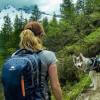






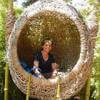






































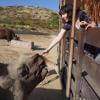
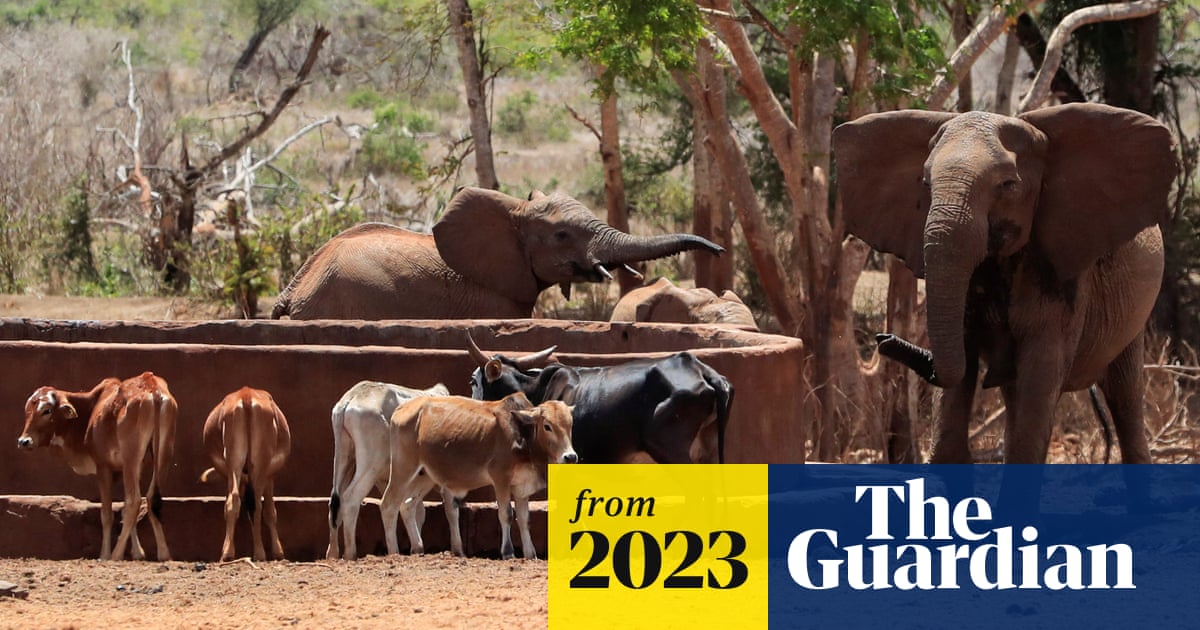








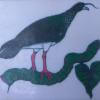
22 June 2023 12:57pm
Beautiful solution!